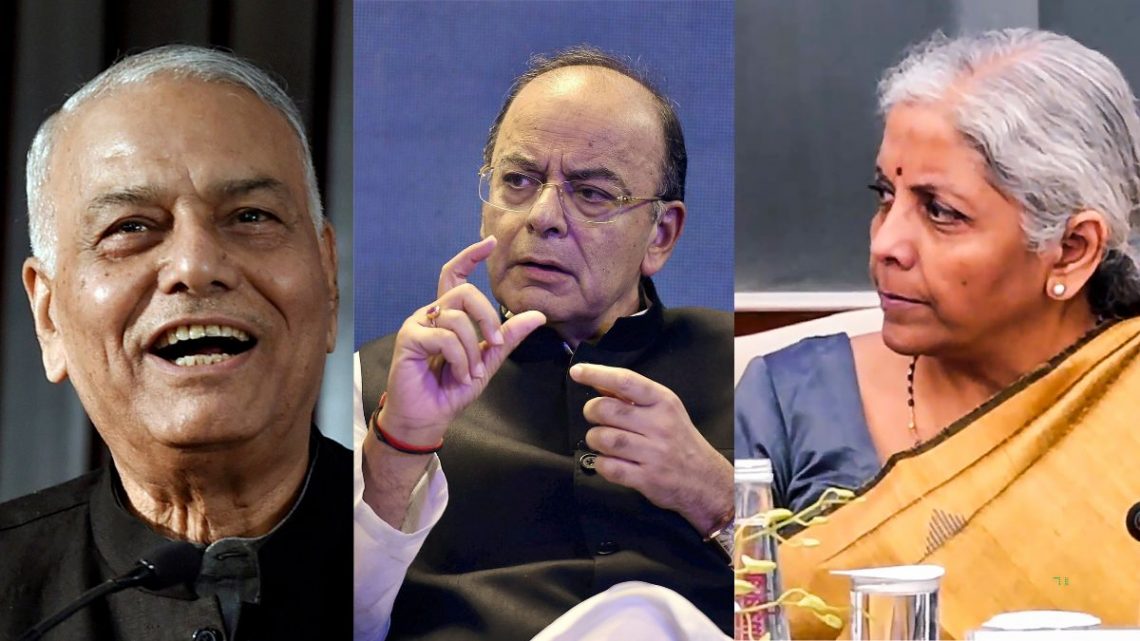Budget 2025 is right around the corner. The BJP-led NDA has big plans for India’s economy that Finance Minister Nirmala Sitharaman is set to present in the Lok Sabha on February 1. This year’s budget is the sixth in a row that Sitharaman tables.
While she has held the office of the Union Finance Ministry for the longest under NDA’s regime, Sitharaman is part of a list of finance ministers who have made key decisions to transform India’s economy while the Bharatiya Janata Party was at the centre.
Here’s a look at the ministers whose policies led India into a trajectory of growth:
Yashwant Sinha served as the finance minister under former prime minister Atal Bihari Vajpayee from 1998 to 2002. During his short but impactful tenure, Sinha was responsible for many pathbreaking decisions including introducing tax reforms aimed at simplifying tax structures.
Sinha also authorised funding for the National Highway Authority that paved the way for the expansion and modernisation of India’s road infrastructure.
He was the one to introduce Fiscal Responsibility and Budget Management in 2000 aimed at institutionalizing financial discipline and reducing fiscal deficits.
The now-Trinamool Congress leader’s key decisions did not just apply to economy-related matters but also to when the budget should be presented. Breaking a 53-year-old tradition, he shifted the Union Budget presentation from 5 pm to 11 am, aligning it more with Indian parliamentary convenience.
It is safe to say that any subsequent finance minister under the NDA has been inspired by Arun Jaitley’s legacy. He served as the country’s finance minister from 2014 to 2019 until he had to vacate the post owing to illness.
The budget presented by Jaitley in the first term of the NDA government was marked by a stark trend – they were against burdening the salaried, middle class, as was reflected in decisions such as raising the income tax exemption limit by Rs 50,000 to Rs. 2.5 lakh.
Jaitley is remembered as the finance minister who brought India under one unified indirect tax regime by introducing Goods and Services Tax (GST) – arguably India’s most important tax reform that removed barriers across the state and enabled the smooth flow of goods from one state to the other.
As a Finance Minister, Jaitley broke several conventions, from merging the railway budget with the General budget – intending to present a holistic picture of the financial picture of government – to advance the budget presentation to 1 February.
The Union Minister of Commerce has also headed the finance ministry as an interim minister from 2018 to 2019.
But his stint at the ministry did not stop him from making an impact. As the finance ministry, Goyal Presided over the GST Council meeting on July 21, 2018, leading to the exemption of sanitary pads from GST and reduced rates on items like toiletries, lithium batteries, and household appliances.
He introduced schemes like Pradhan Mantri Kisan Samman Nidhi and Pradhan Mantri Shram Yogi Mandhan during the 2019 interim budget.
Sitharaman has held the post of finance minister since 2019 and this year’s budget speech will be her eighth. During the past five years, Sitharaman has set major policy decisions in motion that took India’s economy to the next level and helped it create a name for itself in the global south.
During her first budget presentation, Sitharaman introduced a major reduction in corporate tax rates to boost investment and drive economic growth. The tax rate for existing companies was reduced from 30 per cent to 22 per cent, while new manufacturing companies benefited from a reduced rate of 15 per cent.
In 2020, she delivered the longest-ever budget speech that focussed on themes like Aspirational India, Economic Development, and a Caring Society.
Sitharaman has focused on financial inclusion, the merger of state-run banks, and the resolution of stressed assets in the banking sector.
With inputs from agencies
Link to article –
Yashwant Sinha to Nirmala Sitharaman, key decisions by BJP finance ministers


